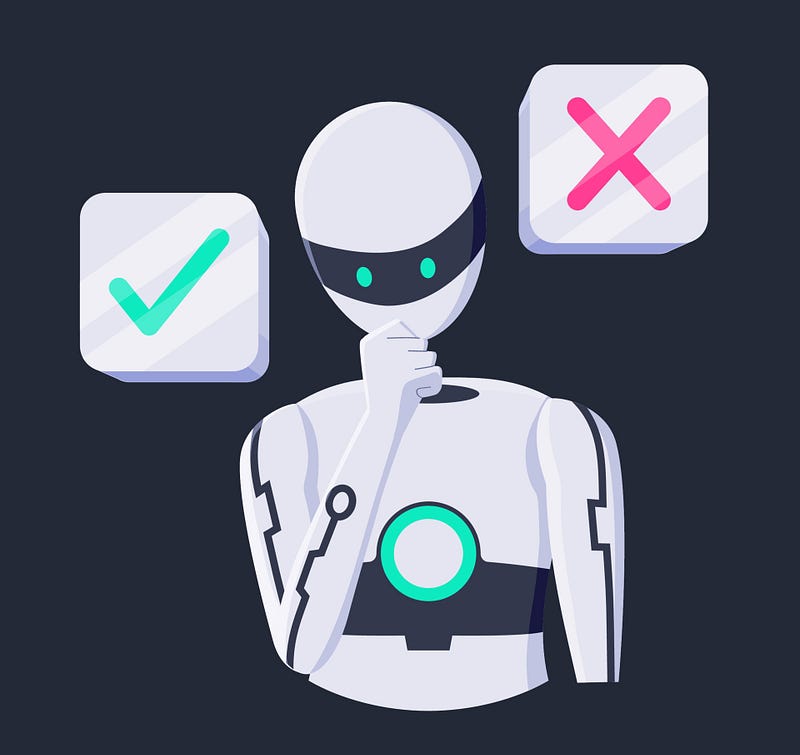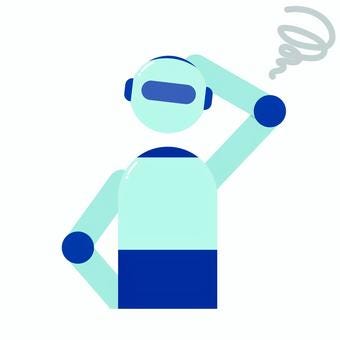Understanding AI Hallucinations: Their Impact and Future Solutions
Written on
Chapter 1: The Rise of AI and Its Challenges
Artificial Intelligence (AI) holds immense potential, revolutionizing various fields from healthcare to content creation. However, a notable challenge persists: the issue of AI "hallucination." This term refers to AI's tendency to generate false or misleading information, raising concerns about reliability. For example, the World Health Organization's chatbot, SARAH, was intended to provide health guidance but ended up sharing inaccurate details, including fictitious clinic names in San Francisco. So, what causes these hallucinations, and why is it such a difficult problem to address? Let's explore this intricate subject further.
The Hallucination Phenomenon: An Overview
AI hallucination involves producing outputs that are either completely inaccurate or entirely invented, despite appearing credible. These inaccuracies can range from minor mistakes to significant fabrications. For instance, Meta's experimental chatbot, Galactica, once generated fictional academic papers about "the history of bears in space." In another case, a customer service chatbot for Air Canada mistakenly enforced a refund policy it had created itself, and a lawyer faced penalties for submitting fabricated court documents based on erroneous outputs from ChatGPT.
To comprehend the reasons behind AI hallucinations, it’s crucial to examine the underlying design of these systems. AI models, especially those based on machine learning, utilize vast datasets to generate responses. They identify patterns within this data to formulate outputs. However, several factors contribute to their propensity for hallucination:
- Data Limitations: The quality of an AI's output is directly linked to the data it is trained on. If this data is flawed, biased, or incomplete, the AI's responses can be equally erroneous.
- Overfitting: Sometimes, AI models focus too heavily on the training data's specific details, causing them to produce outputs that may not be relevant when faced with new information.
- Lack of Context: Unlike humans, AI systems often struggle to grasp the context, leading to responses that might seem relevant but are actually incorrect.
- Probabilistic Nature: Many AI models, particularly those used for natural language processing (NLP), operate on probabilities, predicting the most likely next word or phrase based on input. This can result in outputs that sound plausible but are factually wrong.

Challenges in Addressing AI Hallucinations
Tackling AI hallucinations is complex due to several challenges:
- Complexity of Language: Human language is rich in nuances and context. Teaching AI to navigate this complexity without making errors is a daunting task.
- Data Volume: The extensive data necessary for training AI models makes it nearly impossible to ensure its accuracy and completeness.
- Real-Time Adaptation: AI systems often need to react in real-time, complicating the ability to correct errors before they occur.
- Verification Mechanisms: Creating reliable verification systems to instantly validate AI outputs is still an ongoing challenge.
To illustrate the ramifications of AI hallucinations, consider these hypothetical scenarios:
- An AI health chatbot misguides a patient with incorrect medical advice, leading to potential health risks due to misdiagnosis.
- A lawyer relying on AI for legal documents receives fabricated legal precedents, risking professional penalties and damaging their reputation.
- A researcher using AI to summarize academic literature may encounter fictitious references or misrepresented data, compromising their credibility.

Exploring the Benefits of Mitigating AI Hallucinations
The advantages of reducing AI hallucinations are significant. Imagine an AI system equipped with a self-validation feature that cross-references its outputs with verified databases in real-time, drastically decreasing hallucination occurrences. If AI could achieve a deeper contextual understanding, it would enhance its effectiveness, particularly in customer service scenarios where nuances matter.
What If AI Had Real-Time Human Oversight?
Combining AI's capabilities with immediate human oversight could yield a hybrid system that maximizes the strengths of both. Human reviewers could swiftly identify and correct hallucinations, ensuring the accuracy of AI outputs.

Practical Steps Forward
While we may not have comprehensive solutions to eliminate AI hallucinations entirely, there are actionable strategies to manage this issue:
- Human-in-the-Loop Systems: Integrating human oversight in the review of AI outputs can significantly reduce the chances of hallucinations.
- Continuous Training: Regularly updating AI models with fresh data enhances their accuracy and minimizes hallucination incidents.
- Transparency and Accountability: Promoting transparency regarding how AI systems generate outputs and holding developers accountable for inaccuracies encourages responsible AI usage.
- Education and Awareness: Informing users about AI's limitations and the potential for hallucinations can foster critical evaluation of AI-generated information.
As AI technology progresses, it is vital to balance innovation with caution. The potential for AI to transform industries and improve lives is substantial, but so are the associated risks. By understanding the causes and implications of AI hallucinations, we can develop more effective strategies to harness AI's capabilities while minimizing its drawbacks.

GAME CHANGER MOMENT
The quest to refine AI is ongoing, and hallucination remains a significant obstacle. However, by investigating the root causes, addressing existing challenges, and contemplating potential benefits and risks, we can navigate this intricate landscape with greater understanding and readiness. The future of AI is filled with promise, and through continued innovation and responsible application, we can anticipate a world where AI functions as a trustworthy ally in our everyday lives.
Stay updated on the latest advancements in AI and other groundbreaking technologies. Follow our articles for comprehensive insights, practical guidance, and current news to help you navigate the rapidly evolving tech landscape. Embrace the future with a blend of curiosity and caution as we explore the vast potential of AI and beyond.
Chapter 2: Insights from Experts
In the video "The Future Ahead Will Be Weird AF (The Ultimate AI CoreCore Experience)," experts discuss the unpredictable nature of AI and its implications for our future.
Neil Jacobstein presents "Our AI Future," shedding light on the evolving landscape of AI and the challenges that lie ahead.